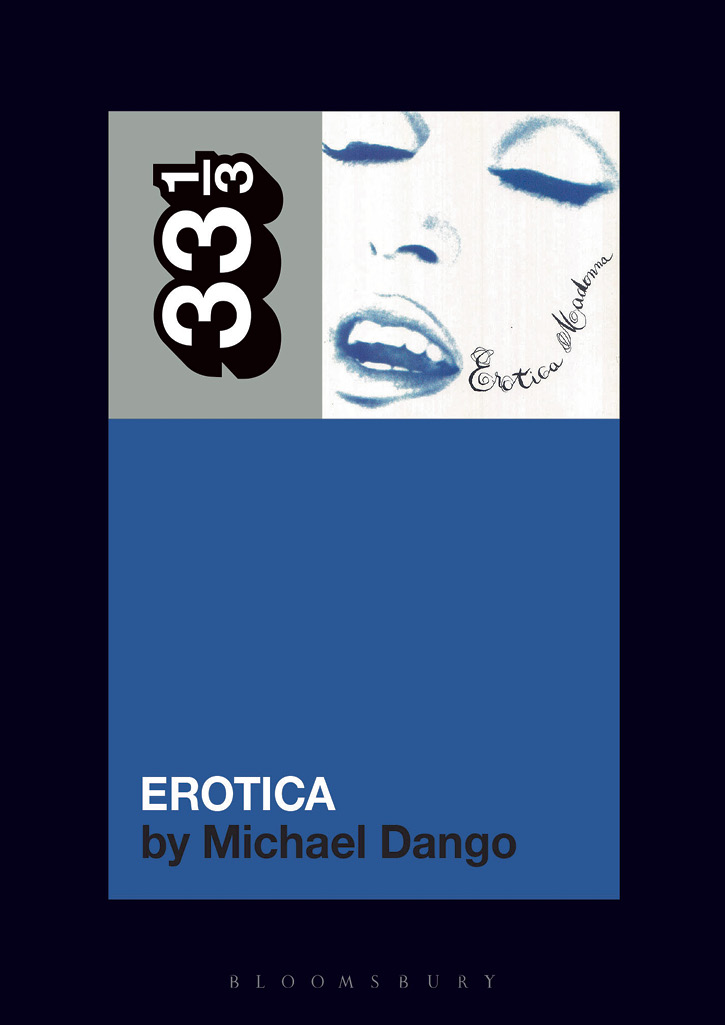
In 1986, when I was a 24-year-old graduate student with an interest in women’s images in the media, I attended a feminist conference on the subject in New York. “Sexuality in Rock Videos on MTV” was the session that really excited me. MTV then was like TikTok now—its videos were extremely familiar to a younger generation and shaped the larger culture. MTV was not receiving any academic attention, but I was convinced that some of the most important imagery—both feminist and retrograde—was being generated on that platform. Finally, I thought, it was going to get the feminist analysis it deserved.
The session’s presenter, a professor, discussed a number of music videos and then popped what she considered to be a “feminist” example into the VCR. It was the singer Paul Young—shaggy mop of hair, sincere eyes, blousy white shirt—crooning his hit, “Every time you go away, you take a piece of me with you.” This video depicted a “sensitive male,” the professor explained—a feminist ideal if ever there was one. Next up was a Madonna video. I’m pretty sure it was “Like a Virgin,” in which Madge rolls around on a moving gondola decked out in layered dancewear, makes meaningful eye contact with the camera, and then slithers seductively in a Venetian mansion while wearing a wedding dress. The professor characterized the video as “a woman making herself into a sex object for male viewers’ pleasure”—therefore, very anti-feminist.
I wriggled in my chair a bit. Why didn’t she get it? I raised my hand and disagreed. Rather than a woman making a sex object of herself, didn’t she recognize that Madonna was completely in charge of the image-making here? What if what we had was not a woman playing to a “male gaze” at all—but to her own gaze? In fact, there was something revolutionary going on with Madonna’s videos, something we had never seen before from a female pop star, or even a female movie star. Madonna proved the existence of a sex subject—the female who is the sexual actor and not the acted-upon. This, I concluded, was a truly feminist video.

It was the first of hundreds of times I have had to defend Madonna. The way I see it, Madonna solved a crucial conundrum for straight women: How can you own your own sexuality in a sexist society? Is there a way to maintain power as a sexual woman? How can you look sexy, and attract the type of partner you want, without becoming a powerless “object” or “victim”? Whenever people try to argue with me on this point—“No, she’s just using her body to sell records, like any other blonde bimbo!”—I point out that straight white men tend to hate Madonna. Her fanbase is primarily straight white women and gay men. And what joins these two groups together is that both seek to define a sexuality outside of the sexual preferences and cultural signifiers that we are most familiar with—those of white heterosexual men.
As a Madonna fan, I was excited that she’d be getting the loving “33 and 1/3” treatment—the Bloomsbury series in which a writer does a deep dive into a single canonical record. In Erotica, Michael Dango, a professor of English and media studies at Beloit, examines her 1992 record, along with her book Sex and film Body of Evidence, as a sort of trilogy “that ended the artist’s imperial phase of commercial and creative peaking.” From the top, Dango acknowledges that from today’s perspective—with our greater attention to cultural appropriation—Madonna can be a problematic figure. But, he argues, we shouldn’t be too quick to write her off. “Even when stuck in the past,” he writes, “[Madonna] still has something to teach us about the present and how we got here, [as] all fossils do.” Ouch.
But where I see a feminist statement in almost everything Madonna does, Dango—a gay, Asian-American man who was a child when Erotica was released—sees a reflection of queer politics, queer culture, and queer sex. Armed with a thorough grounding in queer theory, especially the work of Judith Butler and Eve Kosofsky Sedgwick, and an arsenal of previously published academic articles about Madonna, Dango parses the subject matter with a completely different set of references than were available to me in the 1980s, with my background in feminist film theory and psychology of women.
The result is a freewheeling analysis that at times wanders far afield from its source material. For instance, in the first of this three-chapter book, Dango recalls hearing Madonna’s song “Deeper and Deeper” while at a bathhouse. This leads to a long discussion of the importance of bathhouses to gay culture at the time the song was released, and the way these bathhouses were affected during the AIDS crisis; how Bette Midler got her start singing at gay bathhouses; and how gay men invented more and safer ways of having sex during the time of AIDS, one of which was fisting, of which, Dango points out, Michel Foucault was a big fan. A brief reference to the Madonna song “Rain,” gives birth to a discussion of Gene Kelly in Singin’ in the Rain and the potentially homoerotic relationship between Frank Sinatra and Kelly in a different film, then winds its way back to the subject of gay bathhouses. All of these diversions are intriguing and important, but it can be difficult to see how they shed any light on Erotica itself.
One avenue of thought that doesn’t receive any of Dango’s critical attention, is, surprisingly, feminism. The only reference I found to the feminist impact of Madonna’s work was a tiny, dismissive morsel: “For Madonna, a young white woman, promiscuity, multiple sexual partners, and non-normative sex look liberating, something about owning her body and femininity.” (Emphasis mine).
Erotica was one of Madonna’s least successful albums, and aside from the title track, with its annoyingly non-rhyming chorus of “Erotic, erotic, put your hands all over my body” (bodik?), none of the songs on the album are memorable, or even particularly notable. Moreover, despite the album’s title, the songs aren’t actually erotic—the only track that’s even remotely risqué is a jokey song about cunnilingus, “Where Life Begins.” (“A lot of people talk about / Dining in and eating out / I guess that’s what this song’s about”). Hot?

But for Dango, it is exactly the non-sexiness of Erotica—its reliance on romance and sentimentality—that is both significant and revealing. As he sees it, the album parallels the moment in the gay rights movement when, in response to the AIDS crisis, its focus changed from promiscuous sex to settling down and the fight for gay marriage. (Madonna herself was very involved in speaking out about AIDS; there’s a song on Erotica, “In This Life,” about friends lost to the disease.) Dango also finds erotic significance in the fact that the album contains a mix of musical styles, from disco to jazz to flamenco to electropop. To him, this speaks “to a kind of dissatisfaction with sex itself, or rather, the desire for keeping it fresh.” The sound effects on the album—Dango thoroughly analyzes six examples, including record static, snapping fingers, and glass breaking—serve the same purpose, according to him. Later on, however, Dango suggests that the eclectic range of genres on the album “recall the largest activist artistic intervention in the AIDS epidemic, the AIDS Memorial Quilt.” Does it, though? Dango’s approach to criticism can be difficult to follow for a lapsed academic like myself, but when he takes simple facts about Erotica and interprets them so variously, he really loses me.
It was while reading the last chapter, about Madonna’s skill as a businesswoman, that I felt myself squirming with the same discomfort I’d felt at that long-ago feminist conference. Madonna’s release of Sex, the book, via her recently launched label, Maverick, served “to confirm something people often whispered, usually loudly, about her: that she was a sex worker, someone who sold sex. This Madonna was a whore.” But hang on a minute—if Madonna is a sex worker, who are her customers? Certainly not straight men—Sex wasn’t just another pornographic, naked lady book. These images were very clearly Madonna’s sexual fantasies, staged and directed by the subject herself. Do the images turn you on? Do they turn you off? Madonna doesn’t seem to give a fuck. The book turns her on, which makes Sex, the book, the opposite of sex work. After all, sex work is work—it’s never about the worker’s pleasure, but about what the customer wants.
People have been negging Madonna as a “businesswoman” since forever, and it is, truly, such a tired trope. As Dango acknowledges, music’s biggest money-maker the year Sex came out was Prince. Was Prince not a good businessman? Was the creator of “Sexy M.F.” not selling sex? Prince was an artist with a vision that is often sexual. Madonna is a “good businesswoman” who makes work that has no real value of its own—just sexy snake oil. Referring to Madonna as a “good businesswoman” who is selling sex, but not labelling Prince or David Bowie or George Michael or any number of male artists in the same way, reads as sexism, pure and simple.
Dango finds a historical record in a relatively insignificant Madonna album. By its very title, the record suggests something sexually explicit, but instead delivers something much tamer. In this way, Dango argues, it reflects the era’s unease around sex as a result of the AIDs epidemic, and, like the gay men of that time, seeks to define something safer while still maintaining a modicum of sexual tension. But while gay men may have been retreating from the sexual liberation and promiscuity they embraced and fought for in the decades prior to AIDs, Madonna was still attempting to carve out a path of sexual empowerment for straight women in a culture that, to this day, wants to label us either virgins or whores. To overlook that aspect of her art—or to belittle it as inconsequential—is an oversight that left this reader needing to, well, express herself.

